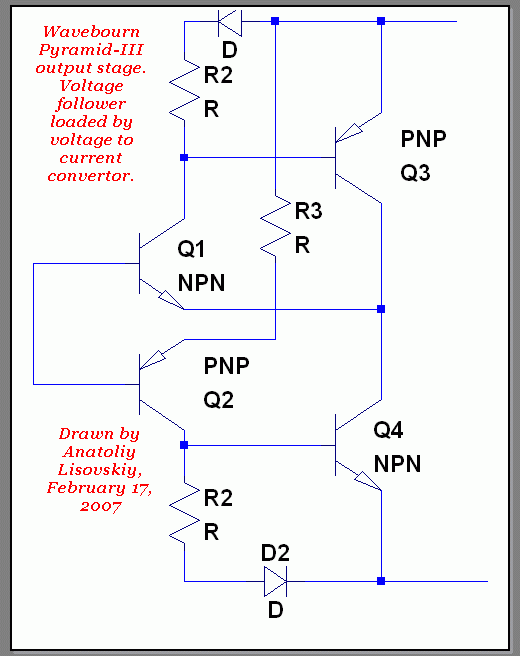FWIW this (Wavebourn's "Better") is an improved (more efficient) class A follower. In a classic class A the current source is DC biased at peak current, and follower device varies between 1x at idle to 2x at positive peak and 0 at negative peak.
This improved variant, uses 1/2 the class A bias current and now varies from 1/2 peak current at idle, to 1x current at positive peak to zero at negative peak. The follower device is only working half as hard, and heat losses will be lower, but distortion characteristic will be similar.
OTOH, if willing to trade some of that hard earned efficiency for less distortion adding back in some fixed DC bias to the variable bias in Q4 will reduce the range of current change in the follower. If a constant current, also equal to half peak was added to the dynamic current we would now have a follower that varies from 1/2 peak at peak minus to 1x at idle and 1.5x at positive peak (only 3:1 change).
If instead we trade some complexity to keep the improved efficiency, add a similar dynamic current loop to the other phase (add another NPN in parallel with Q1 but connect emitter to minus supply through a resistor the same value as R3. You still have the benefit of 1/2 idle class A current but now the current in the follower is zero at idle, zero at positive peak and zero at negative peak. Since followers need some forward bias, add a modest additional dc bias current into Q4. Now the follower will work constant current for low distortion.
With my apologies in advance to Wavebourn, I might suggest a small change to the modulated current sources. Adding a resistor R-em in series with the emitter of Q4 (and Q3) now allows the transconductance to be defined by simple resistor ratios. Setting the peak/2 idle current now becomes current in R3 times R2/R-em.
It is worth noting that there is a base-emitter voltage drop between input and output, and dynamic bias generators will be offset from midpoint between supplies, so rather than dialing them in for peak current/2 perhaps target 2x load resistance scaled also for R2/R-em ratio.
Caveat: I have not bread boarded any of these circuits, and don't plan to, so it might not even work, and if it does it might not have that classic class A sound (distorted). But it was more fun writing about this than chasing the bug in microcomputer firmware I should be working on.
JR














